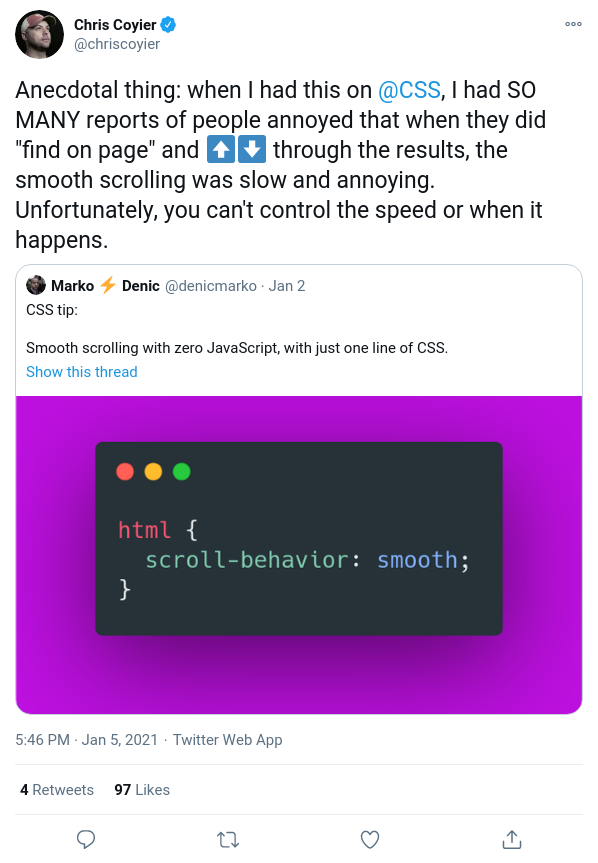

#JAVASCRIPT SMOOTHSCROLL TO ONPAGE ANCHOR HOW TO#
We have looked at how to create anchor tags and how to use CSS to add smooth scrolling behavior. In conclusion, we have learned how to scroll to anchor smoothly with CSS and HTML. This will ensure that when the link is clicked, the page will scroll to the anchor smoothly instead of abruptly jumping to it.

You can use this same technique to create a smooth scroll effect by adding a little bit of CSS to your anchor tag. When someone clicks on that link, the browser will automatically scroll down to the section of the page with the id="example" attribute. Let’s say you have a link to an anchor tag called #example.
#JAVASCRIPT SMOOTHSCROLL TO ONPAGE ANCHOR CODE#
Here’s a quick example code of how this works: To learn more about CSS pseudo-elements, check out our interactive course on codedamn.

This would give the anchor a nice look altogether. These will allow you to add content before and after the anchor element.įor example, you could use the ::before pseudo-element to add a left arrow, and the ::after pseudo-element to add a right arrow. If you want to style the anchor with CSS, you can use the ::before and ::after pseudo-elements. The Scroll Behavior specification allows for native smooth scrolling in browsers both by using JavaScript scroll APIs like window.scrollTo and Element.scrollIntoView or by simply setting the property scroll-behavior to smooth in CSS, which will then make any scrolling smooth by default. You can avoid this by using a little bit of CSS and specifying a smooth scroll behavior for anchor tags on your website. However, simply using the # id anchor tag links can often result in a jarring, unsmooth scroll as the browser jumps directly to that element on the page. This will cause the browser to scroll to that element on the page. In its simplest form, the href attribute can be set to just # followed by the id of the element you want to link to. When creating a link with an anchor tag, the href attribute is used to specify the destination of the link. The anchor tag takes two attributes, href and id. You can create an anchor in HTML by using the anchor tag. The link created by an anchor tag can be clicked on by a user to jump to the linked section. What is an anchor tag?Īn anchor tag is a tag used in HTML to create a link to another section of the same document or to another document altogether. Here is a short description of anchor tags and how to create & style them. In this blog post, we’ll discuss smooth scrolling using HTML and CSS, and will help you understand with an example code.īefore we move over to learn about smooth scrolling you first need to have a background on anchor tags in HTML. When we talk about providing the best user experience on our websites, then developers often consider applying a smooth scrolling effect for navigation. The scroll-behavior property in CSS allows us to define whether the scroll location of the browser jumps to a new location or smoothly animates the transition when a user clicks a link that targets an anchored position within a scrolling box.Anchor tags are often used by web developers to scroll or navigate users to a specific section of websites.


 0 kommentar(er)
0 kommentar(er)
